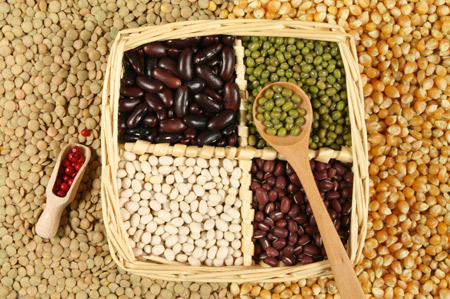Oilseed Area in India Seen Lowest in 12 Years on Monsoon
Category: Oilseeds
 (Bloomberg) – Oilseed planting in India is poised to slump as much as 24 percent to the lowest since 2002 after a weak start to the monsoon spurred farmers to switch to cotton, potentially boosting imports by the biggest buyer of palm oil.
(Bloomberg) – Oilseed planting in India is poised to slump as much as 24 percent to the lowest since 2002 after a weak start to the monsoon spurred farmers to switch to cotton, potentially boosting imports by the biggest buyer of palm oil.
The area sown to crops such as soybeans, peanuts and sunflowers will probably drop to 15 million hectares to 16 million hectares (39.5 million acres) in the monsoon season that began June 1 from 19.8 million hectares a year earlier, Agriculture Commissioner J.S. Sandhu said in an interview in New Delhi. The lower number would be the least since 14.4 million hectares in 2002, Agriculture Ministry data show.
Sowing of everything from rice to corn and oilseeds was delayed this year after India posted the lowest June rainfall since 2009. A smaller oilseed crop would probably spur higher imports of cooking oils by the world’s second-most populous nation which buys more than half of its requirements abroad.
“The dependence on imports will only increase,” said Vandana Bharti, an assistant vice president in SMC Comtrade Ltd., a futures broker based in New Delhi. “Oilseed output will be less than last year as the crop area is set to fall.”
India is the world’s largest cooking oil consumer after China. The country imports palm oil from Indonesia and Malaysia and soybean oil from the U.S., Brazil and Argentina. Purchases may jump more than 50 percent to 16 million metric tons a year by 2021, Govindlal G. Patel, managing director of G.G. Patel & Nikhil Research Co., estimates. India should take advantage of a slump in prices to build a strategic reserve, Bharti said.
Bear Market
Palm oil entered a bear market this month and tumbled 15 percent this year to 2,257 ringgit ($706) a ton today, while soybean oil reached a four-year low on July 25 amid forecasts for record global cooking oil supplies. Soybean futures in Mumbai climbed as much as 1 percent to 3,670 rupees, the first increase in four days, while refined soy oil rose 0.4 percent.
Vegetable oil imports by India were little changed at 7.08 million tons in the eight months through June, according to the Solvent Extractors’ Association. Purchases are set to jump 12 percent to a record 12 million tons in the year to October and increase further in 2014-2015, Dinesh Shahra, managing director of Ruchi Soya Industries Ltd., estimated this month.
Soybean sowing was delayed because the main growing regions in central India didn’t receive rains until mid-July, Sandhu said on July 28. The area sown to oilseeds such as peanuts and castor may match last year, he said. Soybeans are the biggest crop, followed by mustardseed grown in the winter.
Soybean plantings were 7.8 million hectares as of July 25, down from 11 million hectares by the same date a year earlier, while peanut seeding fell 30 percent to 2.3 million hectares, Agriculture Ministry data show. Total planting of monsoon crops dropped 27 percent to 53.3 million hectares, the ministry said.
Pod Formation
Monsoon crops are sown from June and harvested from October. The country had less than 40 percent of average rains in the first six weeks of the monsoon season that runs through September. The shortage shrank to 23 percent by yesterday.
“Fifteen days back, people were in doubt whether sowing would reach half of last year,” said B.V. Mehta, executive director of the Solvent Extractors’ Association. “We’re much better now. We have to see how the rains behave in September, which is when pod formation happens for peanuts and soybeans.”
The oilseed harvest increased 4.8 percent to 32.4 million tons in 2013-2014, with monsoon-grown crops accounting for 68 percent, according to government data.




